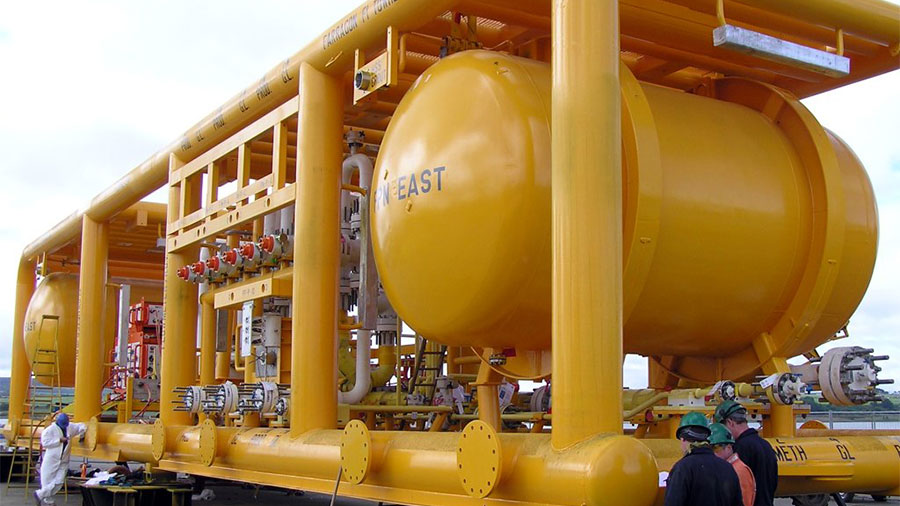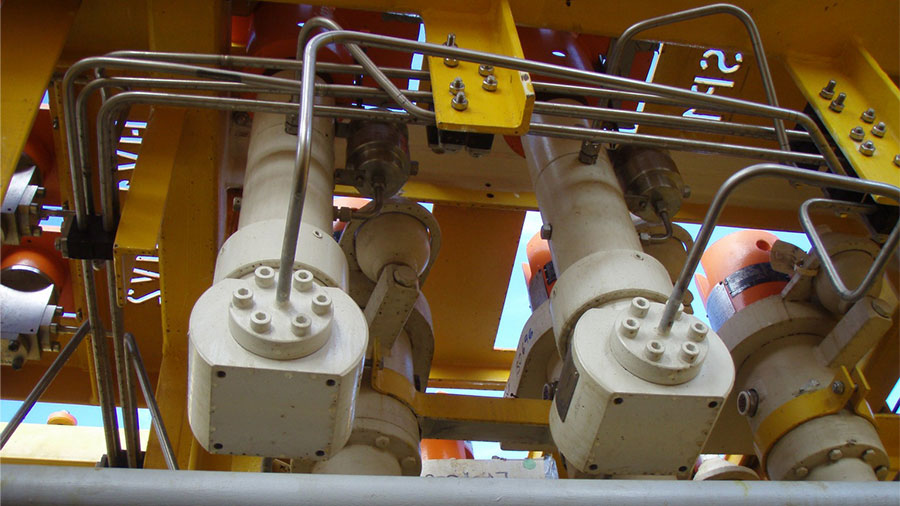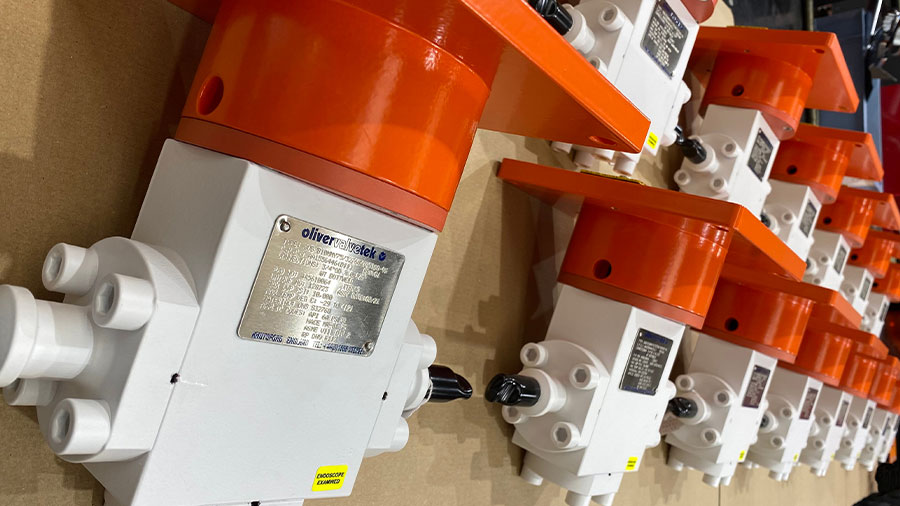
Oliver Valvetek identifies new and emerging opportunities to supply higher pressure small-bore subsea valves, and recognises the technical barriers that hinder most other valve suppliers.
The subsea oil and gas industry has been rapidly developing new technology to allow the development of ‘challenging fields’. These challenges are usually associated with high pressure, high temperature (HP/HT), and operation at great depths.
Fields with pressures of 15,000psi (1034bar) were generally considered high pressure, however, new fields are now being discovered and developed for well bore production with working pressures of 20,000 psi (1380 bar).
Oliver Valvetek had already successfully designed and qualified a 3/8” Nominal Bore 20,000 CWP needle valve for a High Pressure / High Temperature field development in the Gulf of Mexico.
Utilising this specialist and field-proven history with Shell Appomattox, Oliver Valvetek successfully developed and tested a Dual and Tripe Gate valve assembly in accordance with API6A PR2F, API 17D and API 17G.
The journey started early in 2021, Oliver Valvetek scoped out opportunities to supply other small-bore High Pressure / High Temperature valves to these new and technically challenging fields. Working closely with Trendsetter Engineering based in Houston on their modular Trident 20K Intervention System, Trendsetter and Oliver Valvetek engineers began work on designing valves that would meet these new high pressure, high temperature requirements.
Subsea small-bore valves have to conform to the same rigorous standards for design, qualification and manufacture as the much larger bore valves. Rapid demand for smaller compact HP/HT valves has mainly been due to increased numbers of 20,000psi fields being reviewed for development.
Clearly, the technical challenge for our engineering team, was how to achieve subsea qualification testing on much smaller and compact valves at much higher pressures and temperatures, and in rapid time. Importantly not compromising on Safety, which remains critical for valves being installed in these applications.
Work began in March 2021 to develop two valve types that were required for critical application of flow control and monitoring on the Trident 20K Intervention System – ½” Double Gate Valve and ½” Triple Gate Valve, both manufactured using Nickel Alloy 718 material.
Project technical specification requirement:
- High Pressure 20,000 psi
- High Temperature +150°C / +302°F
- Operating Depth 3:048m / 10,000 ft
Small bore gate valves are often used for chemical injection, venting flowlines and bypass lines, and these valves can be required in single isolate arrangements but also in double and triple or 3 valve assemblies.
Weight is a crucial factor for equipment being lifted and installed on the subsea. Using the very latest in elastic-plastic finite element software, valve designs have been optimised to produce the most compact small-bore valve to operate subsea at 20,000 psi high pressure.
API technical reports provided the necessary guidance to our engineering team, and client, on analysis tools and design processes for HP/HT subsea equipment.
This resulted in a Double Gate Valve comprising of 2 x manual Gate Valves in one block, and a Triple Gate valve with a combination of both manual and hydraulic functions. The full valve designs were subject to numerous technical assessments as part of the API qualification, followed by strict design evaluations including; FMECA, Elastic-plastic analysis, Ratcheting Assessment, and Fatigue Assessment, all of which were reviewed and verified by nominated I3P’s such as the Bureau of Safety & Environmental Enforcement (BSEE).
Prototype testing takes many weeks to simulate valve operation at varying pressures, temperatures and working depths. Hydraulic actuated valves require separate testing on the hydraulic operation and the override operation.
Steve Williams explains the extent of the testing process, “Close client collaboration and extensive technical evaluations were instrumental to the success, as too, were the independent design and process validation by Third-Party and client Regulatory bodies evaluating all aspects of the design for Safety, Quality and long-term reliability.
“Enhanced QC & QA procedures at each stage of production of both valves were implemented, including body integrity pressure testing up to 30,000 psi. Even before the order could proceed, the ½” gate valve was subject to extensive in-house qualification procedures that simulated the intervention system, in an extreme pressure and temperature environment deployed subsea – all conducted in our own state of the art R&D facility.”
He continues “Valves operating in such extreme environments require extensive and arduous qualification testing to meet API standards. This project was the most technically reviewed and evaluated one we’ve ever undertaken, and by far, the most rewarding for our engineers and designers. Everyone involved in the project is acutely aware of the leaps we’ve made in terms of research & development, engineering design, and manufacturing processes. We’re all very proud of this achievement and very much look forward to future developments with our clients.”
For more information on how Oliver Valvetek can supply your subsea project with the very best valve solutions, contact us on +44 (0)1565 632 636 or email sales@valves.co.uk
Website: www.valves.co.uk








